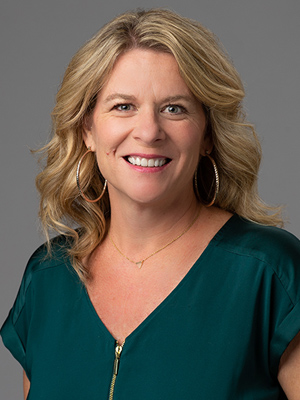Commentary: August is the time to get a head start on suicide prevention, awareness

Photo supplied, Weber State University
Cathy HarmstonWith summer coming to a close and autumn quickly approaching, it’s a good time to start thinking about September as National Suicide Prevention and Awareness Month. For me, September is also a vivid reminder; it’s the month my husband and I learned we had unintentionally failed to help our friend in his darkest hour.
Last September, my husband was cleaning out his Gmail inbox when he ran across an unopened email from his friend and coworker, whom I’ll refer to as Mark. Mark had died about two years earlier, and we had little information surrounding his death. My husband was devastated after reading Mark’s email, which described a failing marriage and recent suicide attempt. It was a cry for help that went unheard. Two months after that email was written, Mark took his own life.
The loss of a loved one by suicide is often shocking, painful and unexpected, and can have profound emotional and financial impacts on families and communities. Family members and friends who knew and loved someone who lost their life to suicide are often left with feelings of guilt, sadness, anger and shame. These are things I know on a professional level, as someone who has studied suicide prevention, but also on a personal level, as someone who has experienced this form of loss.
Nearly 800,000 people in the world die by suicide each year, according to the World Health Organization. Here at home, in Utah, suicide is the state’s eighth leading cause of death — an average of 657 suicides per year, according to the Utah.gov Public Health Indicator Based Information System. These numbers include people of all ages, genders and backgrounds — people who are loved by family and friends.
Individuals who attempt suicide often experience mental illness such as depression, or a variety of other distressing factors such as social isolation, financial problems, relationship problems, job loss, and alcohol or drug misuse. It’s important to heed these warning signs or any suicidal behaviors that could indicate a need for immediate intervention such as inpatient or outpatient mental health services. Although it can be challenging to tell who will act on suicidal thoughts, don’t be afraid to ask someone if they’re considering harming themselves. It’s a myth that talking about suicide will encourage suicide.
If you or someone you know is experiencing suicidal behaviors or thoughts, there’s hope. On July 16, the 988 Suicide & Crisis Lifeline went into effect. Dialing 988 will allow anyone who is feeling suicidal to get immediate crisis support. Support can also be found by contacting a local health care provider, mental health counselor, clergyman, or close family member or friend.
In honor of National Suicide Prevention and Suicide Awareness Month, Northern Utah Hope — better known as NUHOPE — will host a suicide prevention walk for those affected by suicide to find support and understanding among a community of people who desire to save lives. NUHOPE is a coalition spearheaded by Intermountain Healthcare and Weber State University aimed at increasing suicide prevention and awareness. Information on that walk will be available at nuhopeutah.org. My husband and I will be walking in remembrance of our dear friend, Mark.
Dr. Cathy Harmston is an assistant professor at Weber State University’s Annie Taylor Dee School of Nursing, which will celebrate its 70th anniversary next year. She recently completed her Doctorate of Nursing Practice degree where she focused her graduate project on suicide prevention.



